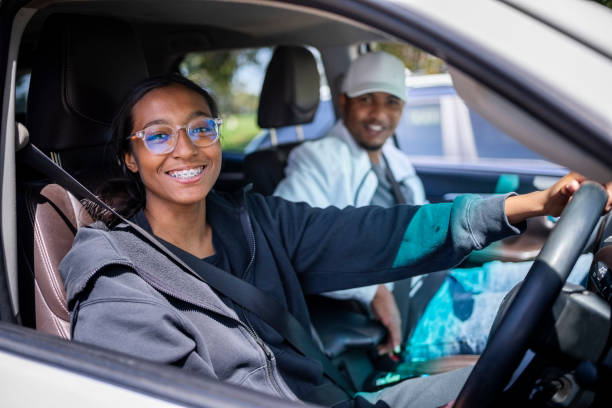In Kenya, mastering road safety rules is crucial for passing the National Transport and Safety Authority (NTSA) driving exam and ensuring safe driving. One common question that often confuses learners is: When can you put on vehicle lights during the day? The options provided are foggy conditions, heavy rainfall, misty weather, and emergencies. This article, crafted for ntsanews.co.ke, clarifies the correct answer using credible sources and integrates practical Kenyan context to guide new drivers.
Understanding NTSA’s Headlight Rules
The NTSA emphasizes visibility as a cornerstone of road safety, especially in adverse conditions. Using vehicle lights during the day isn’t always necessary, but specific situations demand it to enhance visibility and prevent accidents. According to Kenya’s Traffic Act and NTSA guidelines, headlights or fog lights must be used when visibility is significantly reduced, ensuring other road users can see your vehicle clearly.
When to Use Vehicle Lights During the Day
Based on NTSA regulations and common driving exam answers, vehicle lights should be switched on during the day in the following scenarios:
- Foggy Conditions: Fog reduces visibility, often below 100 meters, making it hard for drivers to see oncoming traffic. Using low-beam headlights or fog lights helps illuminate the road and makes your vehicle visible.
- Heavy Rainfall: Heavy rain creates poor visibility due to water spray and low light. NTSA advises turning on headlights to ensure other drivers, especially on busy Kenyan roads like the Nairobi-Nakuru highway, can see you.
- Misty Weather: Mist, common in highland areas like Limuru or Nyeri, obscures vision. Low-beam headlights improve visibility, reducing the risk of collisions.
- Emergencies: During emergencies, such as a breakdown on a highway, hazard lights or headlights signal distress to other drivers, especially in low-visibility conditions.
The correct answer to the NTSA driving exam question is all of the above (a, b, c, d), as each situation warrants daytime headlight use to enhance safety.
Practical Tips for Kenyan Drivers
Kenya’s diverse weather and road conditions, from coastal humidity to upcountry fog, make understanding headlight use critical. Here are practical tips to stay compliant and safe:
- Check Weather Conditions: Before driving, especially during rainy seasons (March-May or October-December), monitor weather forecasts for fog or heavy rain.
- Use Low-Beam or Fog Lights: Avoid high beams in fog or mist, as they reflect light and reduce visibility. Low beams are more effective.
- Maintain Your Lights: Ensure headlights and hazard lights are functional, as NTSA inspectors often check this during vehicle inspections.
- Be Cautious in Urban Areas: In cities like Nairobi, heavy rain can worsen visibility due to surface water. Always turn on headlights to stand out amidst traffic.
Passing the NTSA driving exam requires a solid grasp of road safety rules, including when to use vehicle lights. Misusing lights, like using hazard lights unnecessarily in rain, can confuse other drivers and lead to accidents. By understanding that foggy, rainy, misty, or emergency situations all require daytime lights, learners can confidently answer this question and apply it on Kenya’s roads. Practicing these habits not only ensures exam success but also fosters safer driving, reducing the risk of accidents in challenging conditions.





